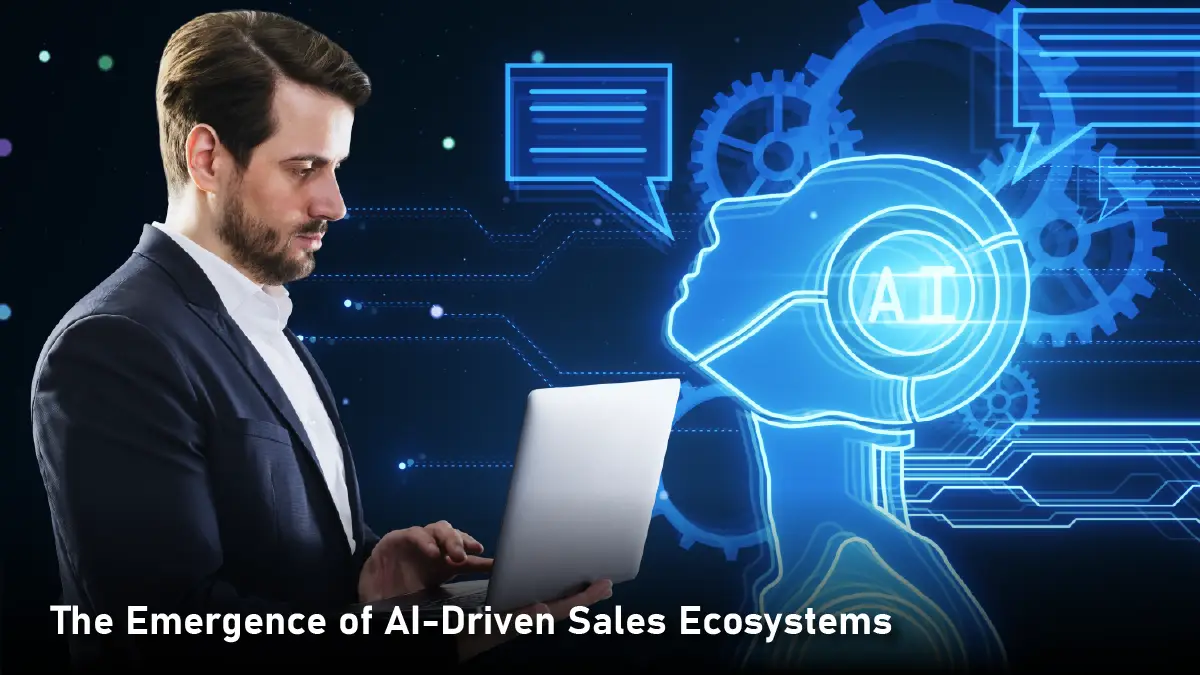For years, people saw the B2B sales funnel as a clear path. It included awareness, consideration, decision, and purchase. Marketing and sales teams use this model to help prospects move from the first contact to closing deals. Data overload, changing buyer expectations, and hyper-personalization are breaking this strict framework. Enter artificial intelligence, the force transforming static pipelines into dynamic, self-optimizing ecosystems. For marketing and tech leaders, grasping this shift is crucial. It’s not just a strategy; it’s vital for survival.
The Collapse of the One-Size-Fits-All Funnel
Traditional sales funnels operate on assumptions that no longer hold. Buyers no longer follow a predictable path. Decision-making committees are growing. Stakeholders want insights that fit their needs. Today, the average B2B purchase involves many touchpoints. These include email, social media, webinars, chatbots, and more. B2B buyers engage with 3-7 pieces of content before talking to a sales representative, with 11% consuming over seven pieces.
The linear model fails to account for this complexity. It treats every prospect identically, ignoring nuances in behavior, intent, and organizational dynamics. Marketing teams waste time on leads that won’t convert. Sales reps struggle to focus on valuable opportunities in scattered data.
This is where AI steps in, not as a tool but as a paradigm shift. AI analyzes large datasets quickly. It finds patterns that humans might miss. This helps teams shift from strict processes to flexible strategies.
The Emergence of AI-Driven Sales Ecosystems

Modern AI platforms don’t just automate tasks; they rewire the entire sales process. Imagine a system that identifies a prospect’s intent through their LinkedIn activity, predicts their budget based on company filings, and serves a personalized case study via email, all before the first meeting. This isn’t hypothetical. Companies like Salesforce and HubSpot already deploy AI to orchestrate such interactions at scale.
The magic lies in three core capabilities: predictive analytics, hyper-personalization, and autonomous optimization.
Predictive Analytics is Seeing Around Corners
AI analyzes historical data, market trends, and external signals, mergers, leadership changes, earnings reports, to forecast which leads are primed to convert. For example, a global SaaS provider reduced its sales cycle length by nearly a third after integrating AI tools that flagged accounts showing sudden spikes in product demo views and whitepaper downloads. These signals, once overlooked, became triggers for immediate sales outreach.
Hyper-Personalization is Going Beyond “Dear [First Name]”
Generic email blasts and templated proposals are relics. AI curates content and messaging tailored to a prospect’s industry, role, and stage in the buyer’s journey. A CTO researching cloud solutions might receive a technical deep-dive, while a CFO sees ROI calculators and cost benchmarks. Dynamic content generation tools like Jasper and Copy.ai enable teams to scale this personalization without manual effort.
Autonomous Optimization Includes Self-Healing Funnel
Traditional funnels require constant tweaking; A/B testing landing pages, adjusting email sequences, reallocating ad spend. AI automates these tasks, iterating campaigns in real time. If a LinkedIn ad underperforms, the system reallocates budget to high-converting channels. If a whitepaper drives more MQLs than webinars, AI shifts focus accordingly. The result? A funnel that learns and evolves without human intervention.
Also Read: From Awareness to Conversion: How In-App Advertising Drives the B2B Buyer’s Journey
Breaking Silos is to Unify Marketing, Sales, and Customer Success
Legacy systems often trap data in departmental silos. Marketing measures clicks, sales tracks call, and customer success monitors churn; but rarely do these metrics converge. AI bridges these gaps by creating a unified data layer.
Take account-based marketing (ABM), where alignment is critical. AI tools like Demandbase analyze engagement across teams, alerting sales reps when a target account’s marketing-qualified lead (MQL) interacts with a pricing page. Simultaneously, customer success teams receive alerts if existing clients exhibit expansion signals, like repeated logins to underused features. This holistic view turns isolated actions into coordinated strategies.
Ethical Considerations
As AI permeates sales, ethical concerns mount. Prospects wary of invasive tracking may reject hyper-personalized outreach. Teams must balance efficiency with transparency. Clear opt-out mechanisms, anonymized data practices, and human oversight are non-negotiables.
Moreover, AI’s recommendations are only as unbiased as the data fueling them. A financial services firm, for instance, discovered its lead-scoring model favored companies in specific regions due to historical biases in training data. Regular audits and diverse data sourcing mitigate such risks.
AI as a Collaborative Partner
The future of B2B sales isn’t about replacing humans with machines but augmenting human creativity with machine intelligence. AI handles repetitive tasks, data crunching, lead scoring, follow-ups, freeing teams to focus on relationship-building and strategic storytelling.
Consider the rise of conversational AI. Tools like Drift and Intercom engage prospects in real-time dialogues, answering questions and booking meetings. But when conversations turn complex, humans take over. This synergy ensures efficiency without sacrificing empathy.
Preparing for the Transition
For organizations ready to embrace dynamic funnels, the journey begins with cultural and infrastructural shifts.
Invest in Unified Data Infrastructure
AI thrives on clean, integrated data. Audit existing CRM, marketing automation, and customer success platforms. Eliminate data silos by adopting centralized cloud ecosystems like Microsoft Azure or AWS, which enable seamless AI integration.
Upskill Teams for an AI-Driven World
Sales and marketing roles are evolving. Train teams to interpret AI insights, not just follow them. Encourage collaboration between data scientists and frontline staff to refine models based on real-world feedback.
Start Small, Scale Strategically
Pilot AI tools in low-risk areas, lead scoring, email personalization, chatbots, before overhauling entire processes. Measure impact through metrics like conversion rates, cycle length, and customer lifetime value.
Conclusion
The shift from linear to dynamic sales funnels marks a turning point in B2B commerce. AI isn’t just streamlining outdated processes, it’s reimagining how businesses build relationships, deliver value, and drive growth. For leaders willing to embrace this transformation, the rewards are profound: shorter cycles, higher conversions, and customers who feel understood, not targeted.
The question isn’t whether to adopt AI, but how fast. In a world where agility defines success, standing still is the greatest risk of all

